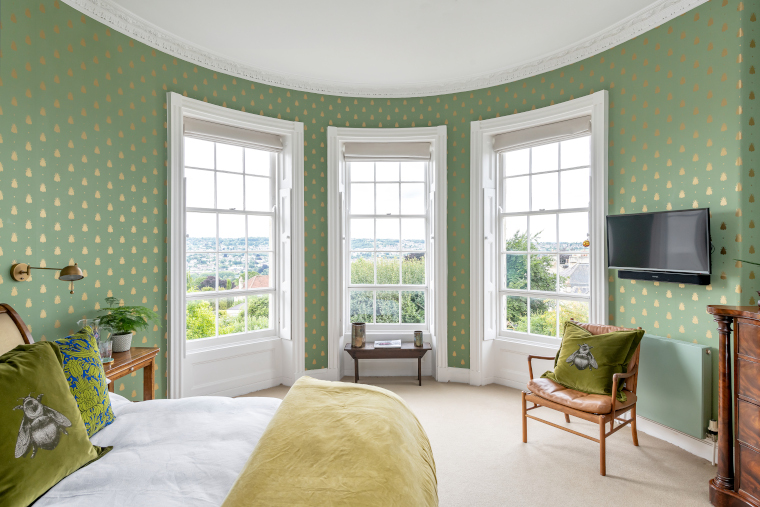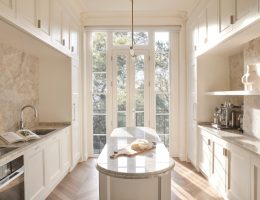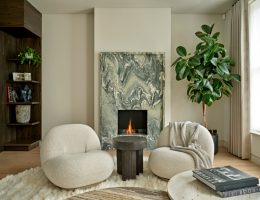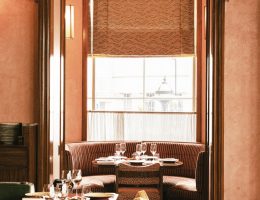In the second of her three features for The Insider, interior designer Verity Woolf discusses the challenges of creating stunning interiors for historical buildings
Verity, you have worked extensively on period properties. Was this always an area you were interested in? I have been very lucky. As a child I stayed in Venice and became really drawn to the romantic architecture of the moody watery streets. I grew up in London and always marvelled at the extraordinary array of period and contemporary architecture around me. I studied Art History as a teenager and would wonder at the architectural detailing in the V&A cast gallery, the medieval Spanish architecture of the Renaissance and the early Florentine and Baroque era is so ‘off the scale’. I also went to a very traditional school in Gloucestershire which is an extraordinary listed building and grounds, where you could get lost in the magical intricacies of the out buildings.
Can you outline the key considerations when starting work on a period property? There are over 500,000 listed buildings in the UK. These significant, beautiful and striking buildings are often listed in order to celebrate and protect the special architectural and historic interest of England’s oldest buildings for the enjoyment of future generations. Planning permission and listed building consent are two separate processes depending on the changes that are proposed. Planning permission is generally required for larger scale residential or commercial development and is mostly concerned with the exterior, use and footprint of a building. For Listed building consent, it is the interior as well as the exterior of the building that is protected by law.
Changes to listed buildings must be carefully considered and executed with care. In most of our projects, innovative new additions of modern amenities to a historic interior scheme have created stunning homes and hotels and this process is often actively encouraged throughout the planning process. We may be creating an authentic period design or a more contemporary look within a period setting. Either way we would seek for the interior design and space layout to be fit for purpose, aesthetically beautiful and sympathetic to the building and its architectural history. This in turn will add to the building’s sustainability and value.

What organisations have you found useful when seeking expert help and advice? Where necessary, we often work with local or regionally relevant planning and heritage specialists, to help gain the necessary permissions and ensure that any changes have the requisite consents. In our experience working with the Conservation Department at the Local Planning Authority, can result in unique and stunning interiors, often bolder in design than the original plan and still respectful of a Historic Building’s rare history.
Once we have a good picture of the property and its history, we can start to look at options to restore or replace original interior features. It is often worth considering the restoration of original plasterwork, fireplaces and tiling as these can make an impactful difference to an interior design scheme in a period property. Over many years we have worked with a wealth of regional historic interior suppliers who specialise in reclaimed, original period features and are expert stone, wallcovering and joinery traditional trades.
Is it possible to make historic buildings more sustainable? Choices around sustainability and environmental accountability are integral parts of our design process and now very much at the forefront of wider public discussion.
Buildings are the UK’s second-largest source of greenhouse gas emissions and most are generated by fossil fuels burnt for heating. Generally, older homes are worse offenders, with poorer insulation, thinner windows and draughty chimneys. We’re passionate about making our projects, and the homes and hotels we work on, as sustainable as possible. This ensures that properties which have already survived so many years can continue to do so.
When it comes to making either a historic or modern property more sustainable, there are a number of differences we can make and the options are growing all the time. For an interior refurbishment, we often use toxin-free paint, natural pesticide-free materials, carpets made of renewable materials like bamboo and wool or recycled timber, acrylic or glass in furniture.
Older properties are often filled with draughty single glazing and gas-guzzling systems, but we aim to ensure that these properties can continue to thrive in a more environmental way. Depending on budget, installing heat pumps, central heat recovery systems and double glazing are all good options. Adding hidden insulation and blocking up flues in unused fireplaces or replacing with bio-ethanol fuel are all efficient heating retention approaches that help to ensure a property functions in the most efficient way, while remaining a beautiful and luxurious space.
Non-toxic paints – Something often overlooked is the toxicity, damage and pollution paint can do over time in a property. We always try to use eco-friendly, low-toxic paint in our projects, like Edward Bulmer, a brand which specialises in plant-based paints. An increasing variety of safe and chemical-free products are available, from organic, hypoallergenic paint to fibres and woods that haven’t been treated with pesticides.
Not only has it been shown that passive inhalation of toxic chemicals are prime suspects of health conditions (such as allergies and asthma), but microporous paint, is breathable, meaning it lets natural moisture in the walls flow through without damaging the building.
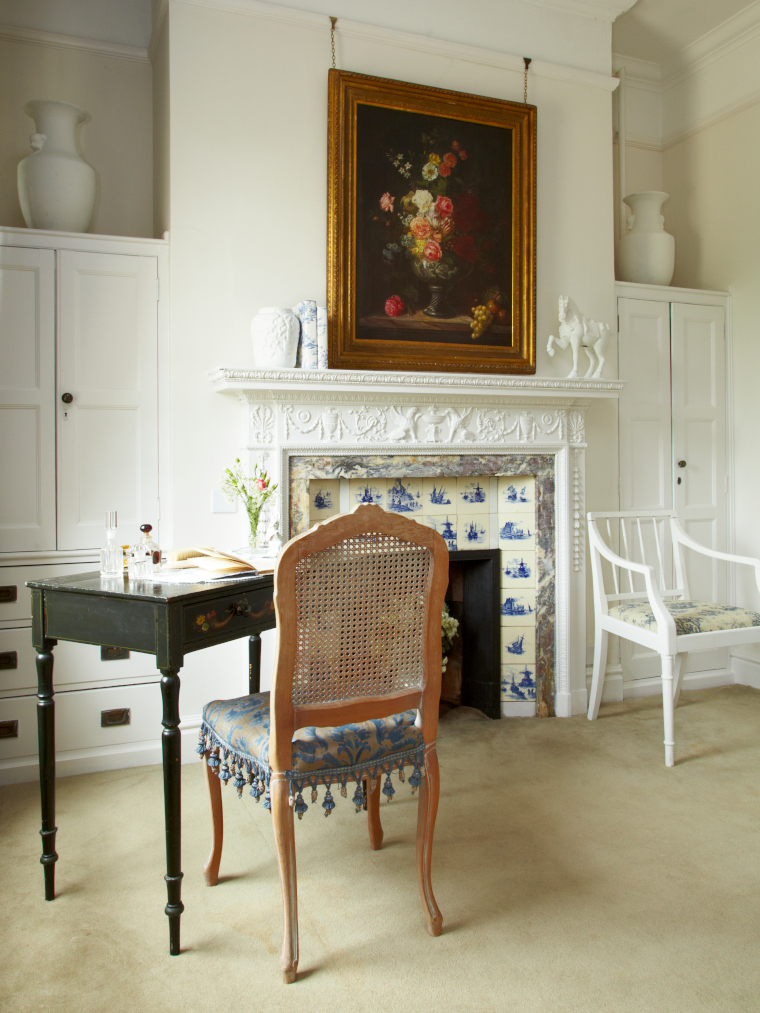
Switch out the carpets – A frequently overlooked opportunity to become more eco-friendly is choosing the right rugs and carpets. One of the biggest landfills is carpets, surprisingly, so we try to use carpets that are as natural as possible to limit toxic materials and dyes, like using wool, jute and cotton which are fully biodegradable. Even some natural dyes can be toxic however.
It’s comforting to see that many companies, such as Axminster, are now looking to narrow down where they source their wool from to keep it as local as possible, reducing carbon footprints and supporting local farmers. Similarly, as rugs are often imported from exotic places, each time a piece is imported its carbon footprint skyrockets so we like to go local where possible.
Do you source both new and antique furniture for period projects? At Woolf Interior Design we often turn to sources such as 1stDibs or Vinterior for unique vintage pieces and to lower the carbon footprint of the project and save import duties, we prefer pieces that originate in the UK. Sourcing vintage pieces is the perfect way to ensure we include rare or unique items and is of course a very renewable option.
Buying pre-loved furniture has become more popular in recent years, due to the sustainable nature of choosing vintage over mass-produced furniture. We have used entirely vintage and refurbished furniture in several of our projects now, including the iconic Gasholders apartments at Kings Cross.
We also always consider the furniture the client already has and how we can reimagine it. If we want new pieces for a hotel or home, we often design bespoke-made furniture. We like to work with the craftspeople to make furniture that is beautiful and timeless, has longevity and is fit for purpose. We enjoy personalising every detail by creating schemes that are underpinned by investment and can be passed down the generations.
How responsible do you feel for the legacy of the property you are working on? At WOOLF Interior Design & Interior Architecture, we find that uncovering the history of a building is a fantastic and fascinating place to start when considering how to upgrade or restore the interior of a listed building. I can understand the strong feeling in this country which yearns to preserve our historic built heritage, particularly when we start to grasp the life cycle of generations who have built and lived in those spaces. We mainly feel a responsibility to unlock the hidden potential of a listed building or period building, so that we can bring about a new lease of life for generations to come, so that the story can keep unfolding.
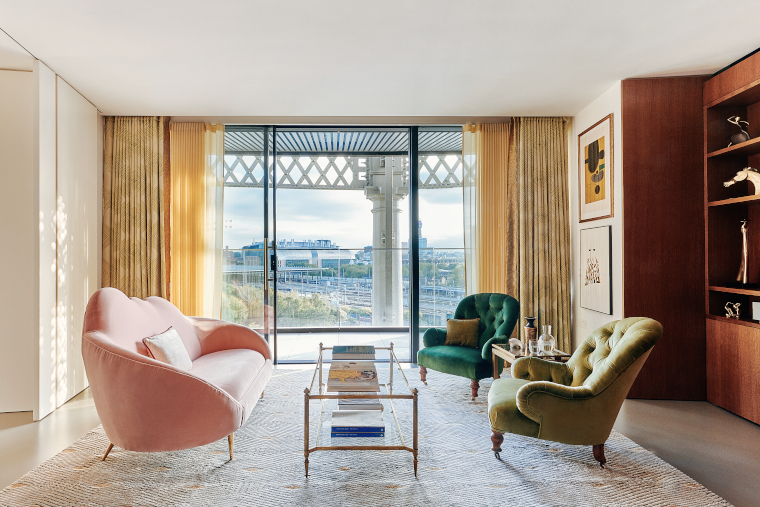
What is the most rewarding project you have undertaken? Hmmm that is tough one. For residential projects we have designed homes for a blended family situation working towards a singular unified home. That is really rewarding particularly when you close the door knowing that everybody has had their own input and the balance of space that they need.
We have also worked on a number of projects where a family or an individual has a particular disability and we are working with listed building conventions versus accessibility parameters. Everyone should be able to enjoy living comfortably in a listed building, when we unlock that particular Rubik cube, that is really satisfying.
What was your most interesting hotel project to work on so far? It has to be for The Maybourne Hotel Group. They boast some of the most famous luxury hotels in the world, including Claridges, for which we were brought in as a consultant. As a listed building in Mayfair, it is beloved for its splendour, charm and impeccable service. The hotel’s original Art Deco interiors have been sensitively interwoven with modern flourishes. We gained first-hand insight and learnt the secret of how an internationally renowned luxury hotel maintains its history, whilst staying constantly relevant to its guests since the 1800s. It’s quite a track record!
(If you enjoyed reading this, I’m sure you will also enjoy Verity’s feature: How To Create The Perfect Hotel Bedroom)
